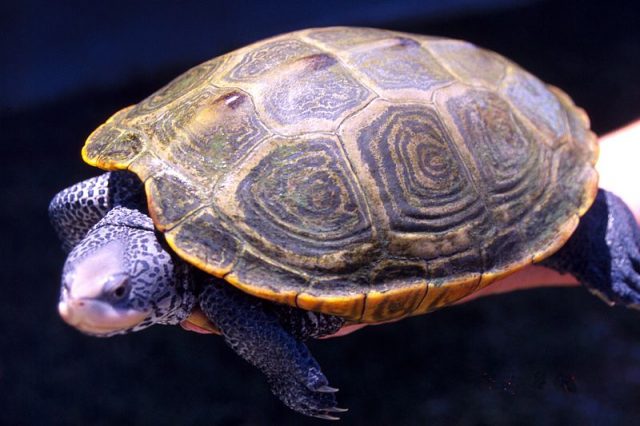Type the name of the breed you're looking for below
[wpdreams_ajaxsearchlite] Don't see the breed your're looking for? Click here and let us know!
Diamondback Terrapin
| Place of Origin and Range | The Diamondback Terrapin or simply terrapin, is a species of turtle native to the brackish coastal swamps of the eastern and southern United States. |
| Description | The common name refers to the diamond pattern on top of its shell (carapace), but the overall pattern and colouration vary greatly. The shell is usually wider at the back than in the front, and from above its appears wedge-shaped. The shell colouring can vary from brown to grey, and its body colour can be grey, brown, yellow, or white. All have a unique pattern of wiggly, black markings or spots on their body and head. The diamondback terrapin has large webbed feet. |
| Morph Patterns Available | Yes |
| Adult Size | Can grow up to 9in (22cm) |
| Accommodation | This species occurs naturally in brackish water, requiring them same in their habitat. This can be created using marine sea salt, as sold for salt water aquariums. They require large enclosures, semi-aquatic, temperatures above 60 °F (16 °C), and bedding composed of grasses or grass-based hay. |
| Lifespan | Can live 10 + years |
| Feeding / Diet | They are carnivorous, consuming a wide variety of aquatic invertebrates including crayfish, freshwater clams, snails, aquatic larvae, tadpoles and various insects. They will also eat fish and carrion. A hatchling's diet is much more carnivorous than an adult's, and may slowly acquire a taste for aquatic plants as the turtle matures. |
| Breeding | Mating behavior appears to be triggered by rain; in captivity, spraying males with water results in them chasing females and attempting to mount. Nothing is known of nesting behavior in the wild. One, two, or rarely three eggs are laid per clutch; in captivity, laying usually occurs in the night or early morning. Females produce up to three clutches per year. A plastron hinge develops to ease laying. Three captive incubation's have succeeded, with a duration of 106, 110, and 145 days. |



